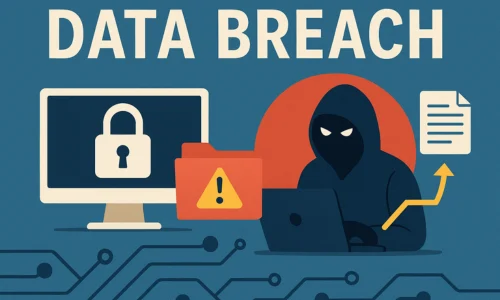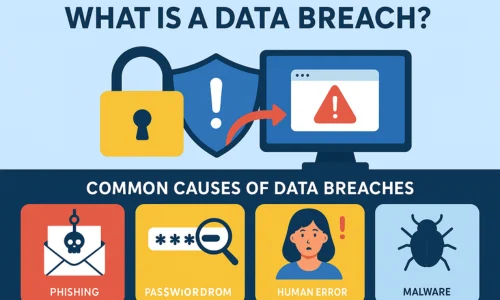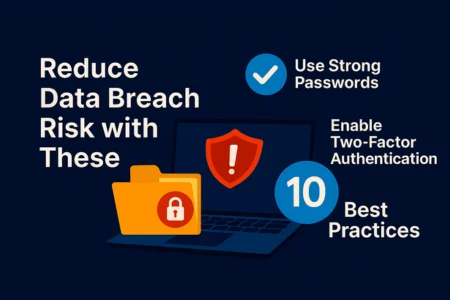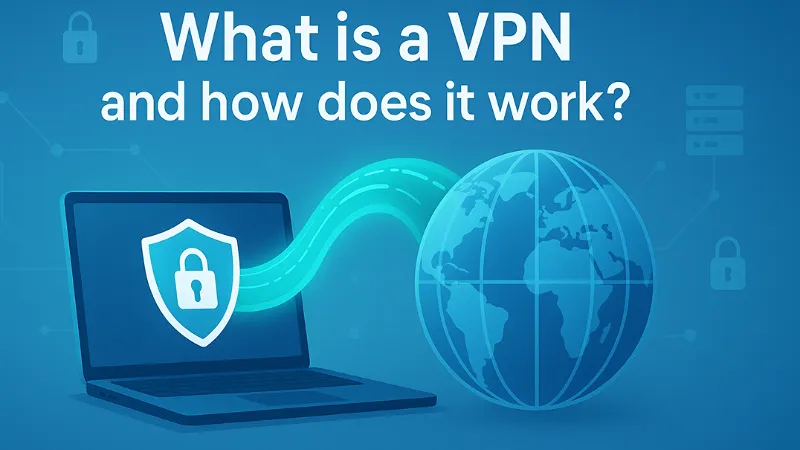Data is one of the most valuable assets your business owns—and one of the most targeted. Every organization, regardless of size or industry, must understand how to reduce your risk of a data breach and protect sensitive information from ever-evolving cyber threats. A single incident can compromise customer trust, disrupt operations, and lead to costly recovery efforts. Learning how to reduce your risk of a data breach is not just a technical concern – it’s a critical business priority that impacts your reputation and bottom line. Whether you run a global enterprise or a small startup, the risk of a data breach is real and potentially devastating. The good news? There are practical steps you can take to protect your data and minimize your exposure.
In this post, we’ll break down what causes data breaches, why they happen, and how to reduce your risk.
What Is a Data Breach?

A Data Breach occurs when sensitive or confidential data is accessed, disclosed, or stolen by unauthorized individuals or systems. It represents one of the most serious cybersecurity threats that organizations face today. A Data Breach may expose financial records, personal information, trade secrets, or any other type of protected data. Breaches often result from weak passwords, insecure networks, outdated software, or phishing attacks.
Understanding what a Data Breach is and why it happens is crucial to developing strategies that reduce your risk of a data breach. When hackers gain unauthorized access to systems, they can use the compromised information for fraud, identity theft, or corporate sabotage. Even unintentional data exposure – such as misconfigured databases or lost devices – can have devastating effects.
A Data Breach not only causes immediate financial and operational disruption but also erodes customer confidence and can lead to regulatory penalties. To reduce your risk of a data breach, businesses must take proactive steps such as encrypting sensitive information, enforcing strict access controls, and regularly monitoring systems for suspicious activity. Recognizing the potential sources of a breach and addressing them promptly is essential for maintaining trust and compliance.
Common targets in a Data Breach include:
- Customer personal data (names, emails, payment info)
- Company financial records
- Intellectual property
- Employee information
The consequences can be severe – ranging from financial loss and reputational damage to legal penalties and customer distrust.
Common Causes of Data Breaches

Understanding the Common Causes of Data Breaches is key to defending your organization from cyber threats and learning how to reduce your risk of a data breach. A Data Breach can result from multiple factors – some technical, others human – and recognizing these vulnerabilities helps you take preventive action. Each cause represents a potential weak point that attackers can exploit to gain unauthorized access to sensitive data.
Here are some of the most common causes of data breaches to watch out for:
- Phishing Attacks – One of the most widespread methods, phishing involves tricking employees into revealing credentials or downloading malicious attachments. It remains a major source of Data Breaches and can often be mitigated through regular security awareness training.
- Weak or Stolen Passwords – Using simple or reused passwords provides cybercriminals an easy gateway into company systems. Strong password policies and multi-factor authentication can significantly reduce your risk of a data breach.
- Unpatched Software – Failing to update operating systems or applications can leave vulnerabilities exposed. Cyber attackers often exploit these flaws to trigger a Data Breach.
- Insider Threats – Employees, contractors, or third-party vendors may intentionally or accidentally cause a Data Breach by mishandling sensitive information or failing to follow security protocols.
- Misconfigured Cloud Settings – Cloud storage errors are becoming a leading cause of data exposure. Proper configuration, encryption, and regular audits can help reduce your risk of a data breach.
- Lost or Stolen Devices – Laptops, smartphones, and external drives containing confidential data can easily fall into the wrong hands, leading to a Data Breach if they’re not properly secured.
- Malware and Ransomware Attacks – Malicious software can infiltrate networks, steal data, or lock systems until a ransom is paid. Preventing this type of attack is critical to maintaining data integrity.
By understanding and addressing these Common Causes of Data Breaches, businesses can build stronger defenses, improve their security posture, and confidently take steps to reduce their risk of a data breach.
Reduce Data Breach Risk with These 10 Best Practices

Protecting your business from a data breach requires proactive and layered defense strategies. By implementing these 10 proven ways to reduce your risk of a data breach, organizations can improve their cybersecurity posture, safeguard sensitive information, and strengthen their ability to detect and respond to potential threats. Each of these best practices plays an essential role in preventing unauthorized access, data leaks, and cyberattac
Use Strong and Unique Passwords
Encourage employees to create long and complex passwords with a mix of uppercase and lowercase letters, numbers, and special characters. Avoid using the same password across multiple accounts. Implement a password manager to help users generate and store secure credentials safely. Strong passwords are your first defense in reducing the risk of unauthorized access and preventing a potential data breach.
Enable Two-Factor Authentication (2FA)
Adding an extra layer of security through two-factor authentication (2FA) significantly decreases the chances of a data breach. Even if a hacker gains access to your password, the second layer—usually a code sent via SMS or generated by an authentication app—makes it much harder for them to infiltrate your accounts.
Keep Software and Systems Updated

Outdated software often contains vulnerabilities that hackers can exploit. Regularly update your operating systems, applications, and firmware to patch security flaws and strengthen defenses. Automated updates and vulnerability management tools can help ensure no critical updates are missed, reducing your exposure to data breach risks.
Educate Employees and Users
Human error is a major factor in data breaches. Training employees or users to recognize phishing scams, suspicious emails, and unsafe websites can drastically reduce the risk of compromising sensitive information. Conduct regular workshops and provide resources on cybersecurity best practices.
Encrypt Sensitive Data
Encryption protects your data by converting it into a coded format that can only be accessed by someone with the correct decryption key. Encrypt both stored data and data in transit to ensure that even if your data is intercepted, it remains unreadable to unauthorized users.
Implement Access Controls
Not everyone needs access to all types of data. Limit access to sensitive information only to those who need it. Role-based access controls (RBAC) ensure that users only have permissions that are important for their job functions. Regularly review access privileges to keep your system secure.
Regularly Back Up Your Data
Establish a routine data backup strategy that includes both on-site and cloud-based storage. Ensure backups are encrypted and tested regularly for reliability. In the event of a data breach, system failure, or ransomware attack, secure backups allow you to restore operations quickly without losing critical information.
Monitor Systems for Unusual Activity

Implement monitoring tools to track login attempts, file access, and network traffic. Early detection of unusual activity allows you to respond swiftly before a potential breach escalates. Automated alerts can notify administrators of any suspicious behavior in real time.
Partner with Cybersecurity Experts
Working with cybersecurity professionals can help you identify vulnerabilities and develop a comprehensive defense strategy. These experts can conduct penetration testing, audit your security protocols, and recommend tailored solutions to reduce risk.
Develop a Breach Response Plan
Even with the best preventive measures, no system is completely immune to attacks. Having a breach response plan in place ensures that you can react quickly and efficiently. The plan should outline steps for containment, communication, data recovery, and legal obligations.







